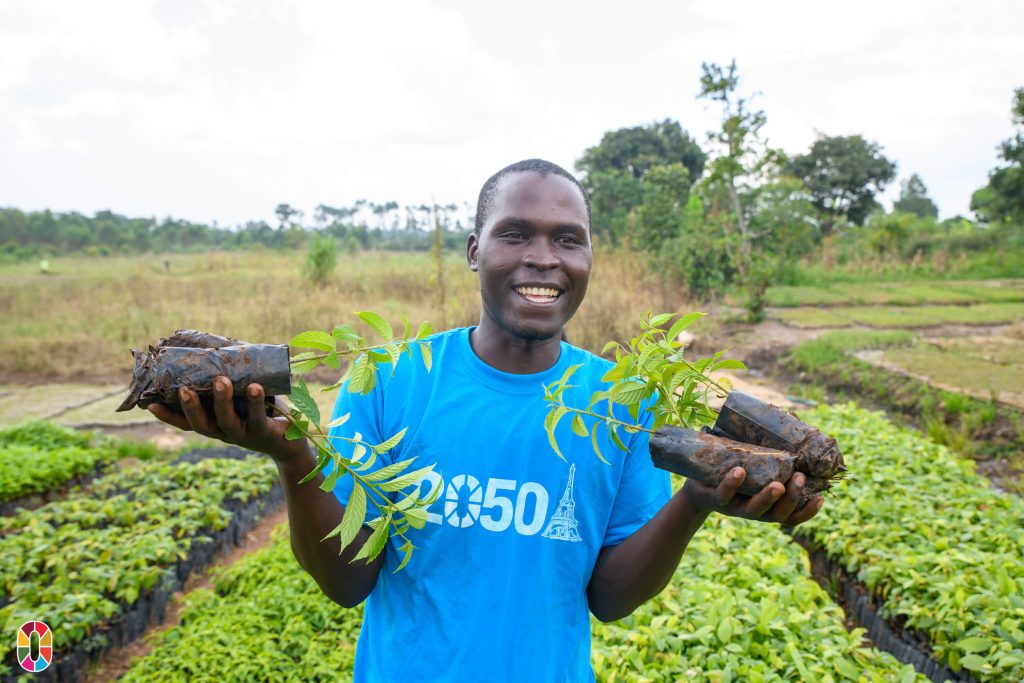Planting Trees Against Climate Change: The 2050 Paris Program
Share this article:
Introduction
The battle against climate change is more critical than ever, and one of the most powerful weapons in our arsenal is the humble tree. The 2050 Paris Program is dedicated to making a lasting impact on our planet by planting trees in Uganda and beyond. In this comprehensive post, we'll delve into the why, what, and how of tree planting in our mission to combat climate change and promote a sustainable future. Planting tree against climate change
How Many Trees Are There and How Many Trees Disappear Every Year?
Every year, the world witnesses the alarming disappearance of an estimated 15 billion trees. This relentless loss of our planet's green guardians has far-reaching consequences for our environment and climate. Understanding the primary causes behind this tree vanishing act is vital for addressing deforestation and the associated carbon emissions.
Deforestation for Agriculture: Agriculture expansion is a leading culprit. Large-scale farming necessitates clearing vast forested areas, often through slash-and-burn techniques, to make way for crops and livestock.
Logging and Timber Industries: Unsustainable logging practices for the timber industry result in substantial tree loss. Trees are felled for construction, furniture, and various wood-based products.Urbanization and Infrastructure: Rapid urban growth and infrastructure development demand land, often leading to forest clearance for roads, buildings, and other structures.
Forest Fires: Natural and human-induced forest fires devour extensive forested regions, causing immense tree casualties.
Climate Change: Rising temperatures and shifting climate patterns weaken trees, making them vulnerable to pests and diseases, contributing to their decline.
Illegal Logging and Land Encroachment: Illicit logging operations and unauthorized land encroachment threaten forests, as criminal activities often evade regulatory control.
Mining and Extractive Industries: Resource extraction activities like mining and oil drilling necessitate deforestation, disrupting ecosystems in the process.
Infrastructure Expansion: The development of infrastructure, such as roads and dams, results in habitat fragmentation and forest degradation.
Understanding the causes of tree loss is pivotal in the context of carbon credits. Reforestation projects that counteract deforestation can earn valuable carbon credits, contributing to global efforts to combat climate change. By addressing the root causes of tree disappearance, we can protect our invaluable forests and mitigate carbon emissions, preserving a sustainable future for generations to come.
Which Type of Trees We Plant in Uganda: Environment-Driven Choices
Financial Equity and Reduced Carbon Emissions
In Uganda, our tree planting initiatives are driven by the specific environmental needs of the region. Climate, soil conditions, and local ecosystems play a crucial role in determining the types of trees we plant. Some common tree species in Uganda include:
Mango Trees: Known for their delicious fruit, mango trees also contribute to reforestation efforts due to their resilience and adaptability to various soil types.
Eucalyptus Trees: These fast-growing trees are a popular choice for their ability to provide timber and combat soil erosion.
Pine Trees: Pine trees are excellent for timber production and play a significant role in improving soil quality.
Acacia Trees: Known for their nitrogen-fixing capabilities, acacia trees enrich the soil and promote biodiversity.
Our commitment to planting diverse tree species ensures the sustainability of local ecosystems and contributes to the broader fight against climate change.
How Much CO2 a Tree Can Capture
Trees are remarkable carbon capture machines. On average, a single tree can absorb approximately 48 pounds (22 kilograms) of carbon dioxide (CO2) annually. Over a tree's lifespan, this adds up to a substantial amount of CO2 removal from the atmosphere. Our tree planting efforts, when multiplied across thousands of trees, result in a significant reduction in greenhouse gas emissions.
Preserving Biodiversity: Trees as Natural Habitats
Planting tree against climate change is not only about mitigating climate change but also about preserving biodiversity. Trees provide essential habitats for a wide range of species, from birds and insects to mammals and fungi. By restoring and expanding forests, we create sanctuaries for countless organisms, contributing to the conservation of biodiversity on a global scale.
Preservation and Renewal of Soil: Roots of Sustainability
The intricate root systems of trees are crucial for soil preservation and renewal. They help prevent soil erosion, stabilize landscapes, and enhance soil fertility. In Uganda, where soil degradation is a pressing concern, our tree planting initiatives play a pivotal role in rejuvenating and maintaining soil health for agricultural and ecological sustainability.
Improving Water Quality: Trees as Natural Filters
Forests act as natural filters, purifying water as it flows through the ecosystem. The roots of trees help to absorb pollutants, sediment, and excess nutrients, resulting in improved water quality. By planting trees along water bodies and in critical watersheds, we contribute to safeguarding access to clean and safe drinking water for local communities.
Enhancement of Air Quality: A Breath of Fresh Air
Trees are renowned for their air-purifying capabilities. They absorb harmful pollutants from the atmosphere, such as sulfur dioxide, ozone, and nitrogen oxides, while releasing oxygen during photosynthesis. This natural process leads to improved air quality, reduced respiratory ailments, and enhanced overall well-being for communities living in proximity to our tree planting sites.
Conclusion: Planting Trees for a Sustainable Future
The 2050 Paris Program is dedicated to planting trees as a powerful weapon against climate change. From mitigating carbon emissions and preserving biodiversity to enriching soil and improving water and air quality, trees are at the forefront of our mission. With your support, we can continue to plant trees that contribute to a more sustainable and resilient future for Uganda and the world. Together, we can make a difference, one tree at a time.
Subscribe to our Newsletter
As we work to foster and rejuvenate the natural surroundings, we come across a multitude of significant achievements along our voyage. This extraordinary expedition extends an offer, and we enthusiastically invite you to partake in this undertaking alongside us.